Autism and Alternative Treatments
Navigating Alternative Therapies for Autism: Potential, Promise, and Pitfalls

Introduction: The Quest for Alternatives
Autism Spectrum Disorder (ASD) affects millions of children worldwide, urging many families to explore all avenues for managing its symptoms. Complementary and Alternative Medicine (CAM) has become a common choice, with up to 95% of children with ASD trying various therapies like dietary supplements, sensory interventions, and more. While the quest for holistic approaches continues, so does the need for scientific rigor in validating these alternative treatments' safety and effectiveness.
Understanding Holistic Approaches to Autism
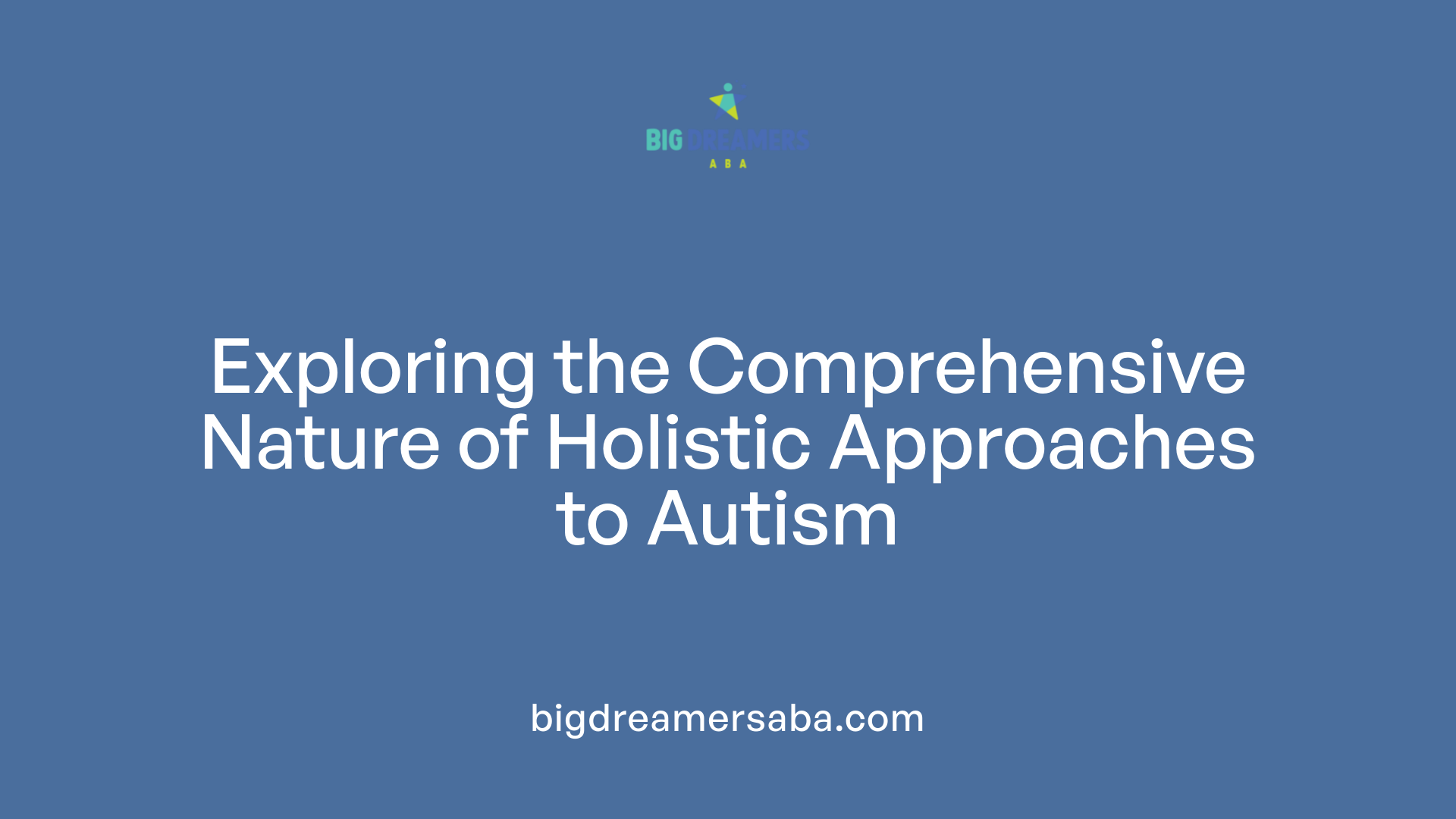
What is the holistic approach to autism?
The holistic approach to autism encompasses a comprehensive framework that addresses an individual's physical, emotional, and social needs. It prioritizes evidence-based therapies such as Applied Behavior Analysis (ABA), Speech Therapy, and Occupational Therapy to target specific challenges faced by individuals with Autism Spectrum Disorder (ASD).
Integrating therapies in the holistic approach
Family-centered care plays a crucial role, involving parents in the therapeutic process to ensure that interventions are personalized. Many families explore the realm of complementary and alternative therapies (CATs), which include:
Caution in the holistic approach
While CATs may improve quality of life, they should be approached with caution and under professional guidance. It's essential for parents to remain informed and prioritize evidence-based treatments while considering alternative strategies. Personalized, well-rounded care is fundamental to meet each individual's unique needs and maximize functional abilities.
Exploring Alternative Therapies for Autism
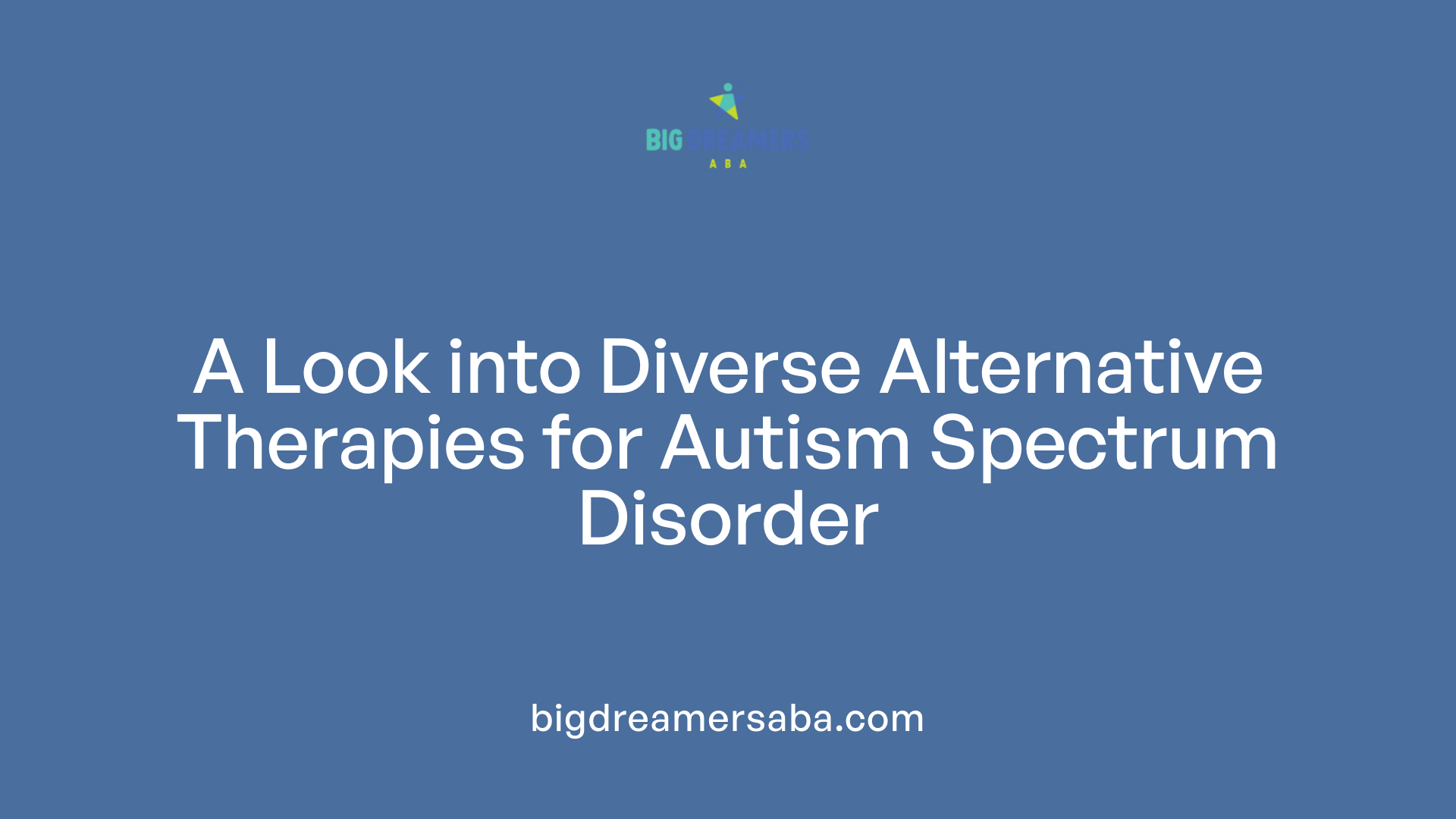
What are alternative therapies for Autism Spectrum Disorder (ASD)?
Alternative therapies for Autism Spectrum Disorder (ASD) encompass a diverse range of interventions, including:
These therapies aim to support cognitive and social skills, improve behavior, and address communication challenges faced by children with ASD. Despite their appeal, it’s crucial to recognize that many alternative therapies lack rigorous scientific validation, with a notable prevalence of anecdotal evidence. Research estimated that around 50% of children with autism in the U.S. engage in some form of complementary or alternative medicine, highlighting a significant interest among families.
Effectiveness of alternative therapies for ASD
The effectiveness of CAM therapies for autism remains a subject of debate. While some parents report benefits from alternative treatments like music therapy or art therapy, most lack conclusive evidence. For instance, systematic reviews indicate that many widely used interventions, such as gluten-free and casein-free diets, do not yield significant improvements in autism symptoms.
Despite the lack of robust evidence, parents often pursue alternative therapies out of concern for side effects from conventional treatments or as adjuncts to traditional approaches. Established therapies such as Applied Behavior Analysis (ABA), Speech and Language Therapy, and Occupational Therapy are recommended due to their solid evidence base and can be effectively integrated alongside alternative methods.
Overall, parents considering CAM therapies are advised to consult healthcare professionals to ensure the safety and appropriateness of treatments, focusing on established methods proven to support children with ASD.
Identifying Effective Treatments for Autism
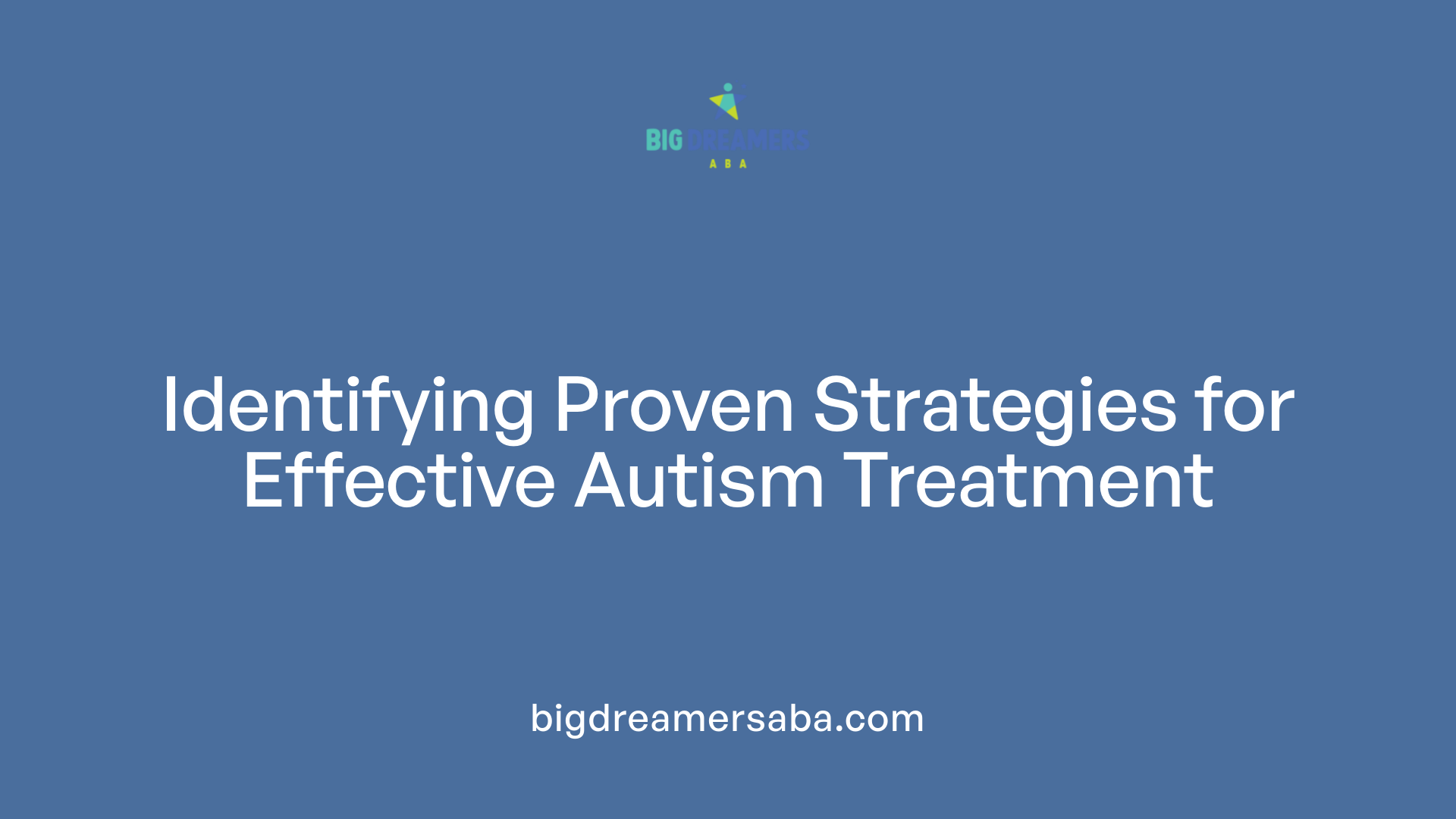
What is the most effective treatment for autism?
The most effective treatment for autism spectrum disorder (ASD) encompasses a blend of behavioral, developmental, educational, and therapeutic strategies tailored to the individual's unique needs. Behavioral approaches, particularly Applied Behavior Analysis (ABA), are widely recognized for their efficacy. Techniques like Discrete Trial Training (DTT) and Pivotal Response Training (PRT) effectively encourage desired behaviors and enhance social skills.
In addition to behavioral strategies, speech and language therapy plays a vital role in improving communication abilities, ensuring children can express themselves and engage in social interactions. Occupational therapy is another critical component, focusing on fostering daily living skills and addressing sensory integration, which can greatly enhance a child's overall functioning.
Early intervention services are especially critical, as they have been shown to significantly improve outcomes for children diagnosed with ASD before the age of three. These early services often lay the groundwork for developmental progress, enabling affected children to acquire essential social and functional skills.
While medications do not directly treat the core symptoms of ASD, certain medications can be prescribed to help manage associated challenges like anxiety and irritability. This multifaceted approach—combining evidence-based interventions and therapeutic support—provides a more holistic pathway to supporting individuals with autism.
The role of complementary approaches
Despite the prevalence of complementary and alternative medicine (CAM) in autism treatment, many parents are urged to exercise caution. Although approaches like music therapy and sensory integration therapy have shown some promise, they should complement rather than replace established treatments. Continuous dialogue with healthcare providers is essential to ensure that any alternative therapies considered align with safety and effectiveness standards.
In summary, while the healthcare community is growing aware of alternative methods, ABA and related therapies remain at the forefront of effective treatments for individuals with autism.
The Role of Music Therapy
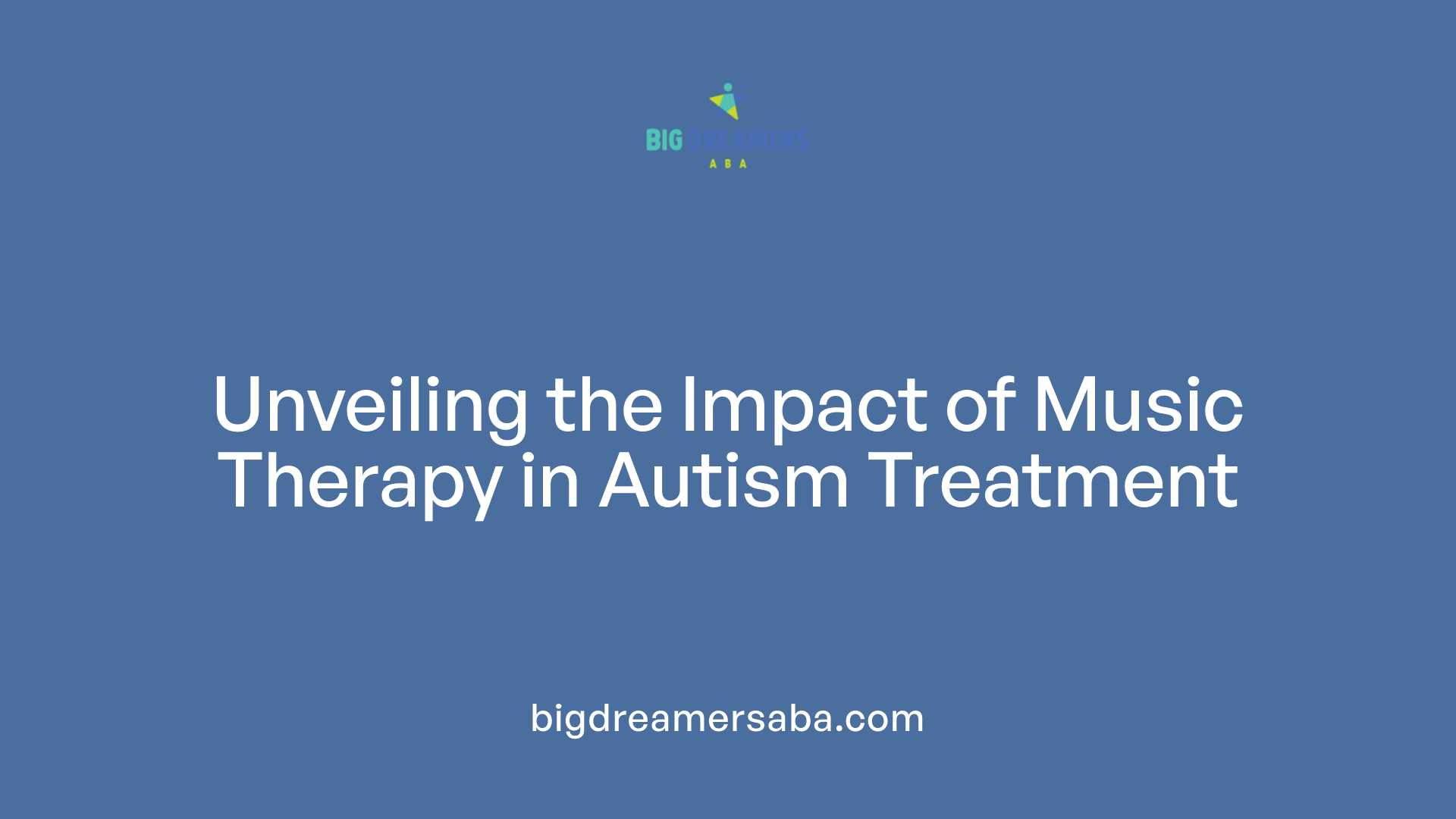
Music therapy in autism treatment
Music therapy has emerged as a promising intervention for individuals with autism spectrum disorder (ASD). This therapeutic practice utilizes music to reach non-musical goals, focusing on enhancing social interaction and communication skills. For children with autism, engaging in music therapy sessions can involve activities such as singing, playing instruments, and movement to music, all of which foster interactive and social play.
Research indicates that music therapy can improve various aspects of communication, including both verbal and non-verbal skills. Systematic reviews have shown significant gains in social reactions among children undergoing this therapy. The ability of music to engage children and create a non-threatening environment makes it particularly effective for those with ASD, as it can help reduce anxiety and encourage socialization.
Benefits and limitations
Despite its many benefits, music therapy does have its limitations. While there are documented improvements in social skills and reduced anxiety levels, findings have been mixed regarding its impact on the overall severity of autism symptoms and other adaptive behaviors. Some studies indicate limited success in areas such as daily living skills and behavioral challenges.
In summary, while music therapy is recognized as a valuable tool in the treatment of ASD, with evidence supporting its effectiveness in enhancing social and communicative abilities, further research is essential. Continued investigation will help clarify its long-term efficacy and reinforce its role within a holistic approach to autism treatment.
AspectBenefitsLimitationsSocial SkillsEnhances social interaction and reduces anxietyMixed results on addressing overall symptom severityCommunicationImproves verbal and non-verbal communicationLimited effects on daily living skills and behaviorsOverall EfficacyPositive impact supported by systematic reviewsNeed for more rigorous studies to confirm outcomes
Examining Light and Sound Therapy
What is light and sound therapy for autism?
Light and sound therapy for autism aims to address the sensory processing challenges often experienced by individuals with autism spectrum disorders (ASD). This intervention typically involves both auditory and visual stimuli to cater to the specific needs of the child.
Sound therapy includes various approaches such as:
These therapies focus on enhancing listening abilities, which may lead to improved social interactions and communication skills. Anecdotal reports suggest that they can help with emotional stability and reduce aggressive behaviors among some children.
Efficacy for autism symptoms
While light and sound therapy can stimulate synaptic growth in the brain and show potential in improving communication, the evidence surrounding its overall effectiveness is inconclusive. Current research highlights the need for well-designed studies to assess its true impact on autism symptoms. Mixed results from various trials mean that families should approach these therapies with caution.
Understanding the potential benefits alongside the gaps in scientific validation can guide families in making informed decisions regarding these therapies.
In summary, light and sound therapy represents an innovative approach to treat certain ASD-related challenges, but far more comprehensive and consistent research is necessary to substantiate its efficacy and safety in managing autism symptoms.
Controversies and Risks of Non-Evidence-Based Treatments
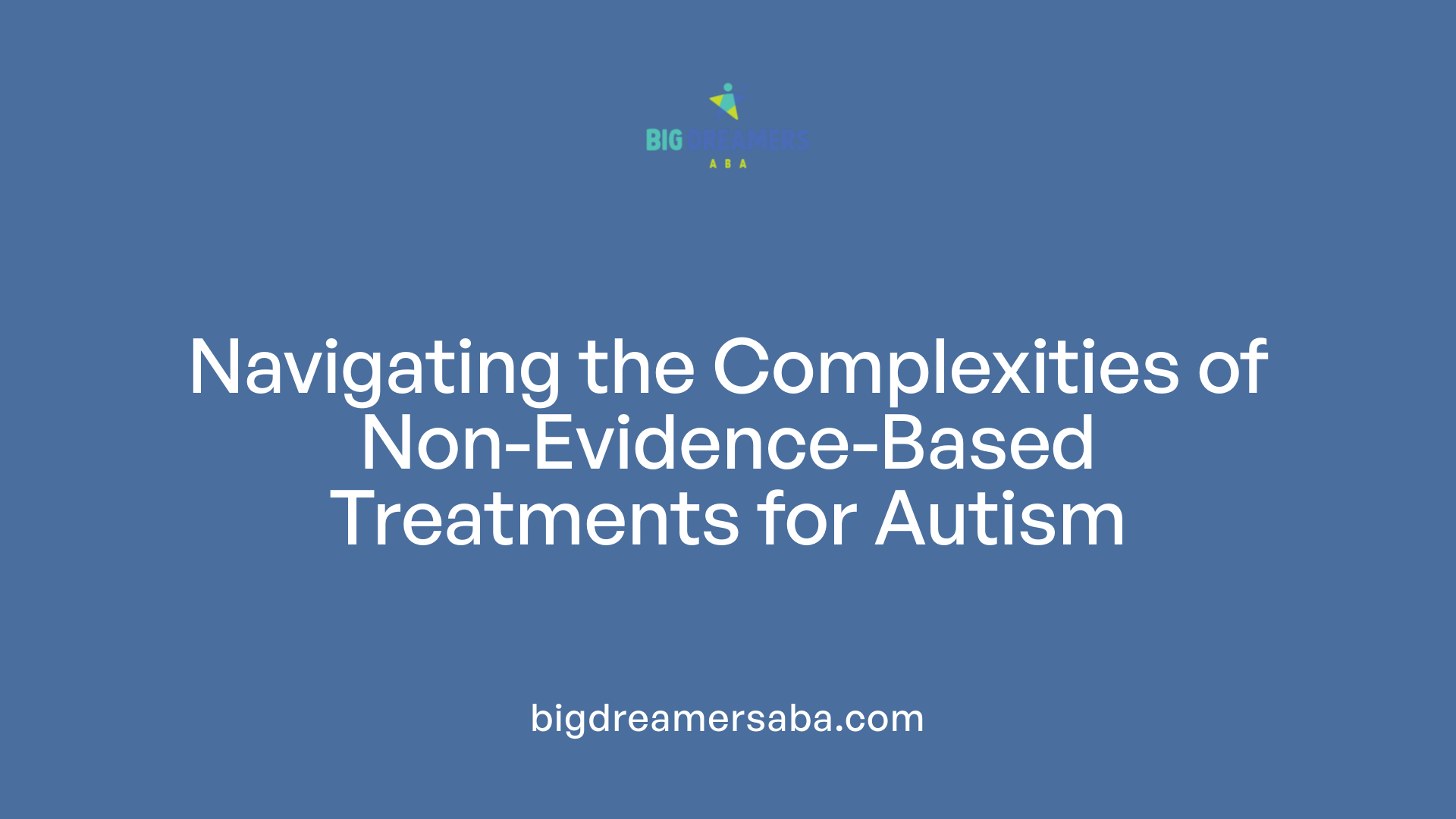
What are the controversies surrounding non-evidence-based treatments for autism?
The landscape of autism treatment is riddled with controversy, particularly surrounding non-evidence-based therapies. Many treatments touted by advocates lack scientific support, raising alarm bells among healthcare professionals. For instance, chelation therapy, often used to remove heavy metals, has resulted in severe health complications—some tragically causing fatalities. Similarly, less invasive approaches like the gluten-free casein-free (GFCF) diet and various dietary supplements rarely show any beneficial effects on autism symptoms and can even lead to nutritional deficiencies.
Families often gravitate toward these unproven methods due to the urgent desire to find solutions in the absence of a cure for autism. This desperation can lead to the misallocation of resources toward therapies that may be ineffective or harmful. Moreover, anecdotal success stories fuel a cycle of misinformation, where treatments lacking rigorous scientific evaluation are marketed as viable options.
What are the risks and ethical concerns?
The ethical implications surrounding non-evidence-based treatments are significant. For example, therapies such as bleach therapy are not only scientifically discredited but also pose severe health risks, underscoring the need for ethical oversight in therapeutic practices. The potential for harm extends beyond the individual, affecting families financially and emotionally as they invest in ineffective treatments, leading to disillusionment with conventional medical options.
Common misconceptions around these therapies can overwhelm families already navigating the complexities of autism care. Additionally, the promotion of treatments that make extravagant claims—often implying a "cure" for autism—can exploit vulnerable families searching for relief. This reality illustrates the pressing need for improved education and communication of scientifically validated treatment options.
Overall, the controversies surrounding non-evidence-based treatments for autism highlight the urgent need for parents to approach alternative therapies with skepticism and to engage healthcare professionals in discussions about the safest and most effective interventions available.
TreatmentEfficacy StatusHealth RisksChelation TherapyNo scientific validationSevere health complicationsBleach TherapyWidely condemnedDangerous with no meritGluten-Free Casein-Free DietLacks evidenceNutritional deficiencies possibleSecretin InjectionsNo efficacy for autismPotential for adverse effects
The Appeal and Limitations of Dietary Interventions
Dietary modifications and autism
Among the various complementary and alternative medicine (CAM) options available, dietary interventions rank high on the list for families seeking ways to manage autism spectrum disorder (ASD). Popular approaches, such as gluten-free and casein-free diets, are frequently tried by parents, encouraged by anecdotal reports of success. The assumption is that dietary adjustments can mitigate some symptoms associated with autism. However, parents should proceed with caution.
Research findings and effectiveness
Despite the popularity of these dietary modifications, research has largely found insufficient evidence to support their effectiveness in treating ASD symptoms. A systematic review revealed that the gluten-free, casein-free (GFCF) diet yields little significant change in behavior or functioning based on broader studies. Furthermore, the health risks associated with restricting certain food groups without professional supervision underscore the importance of discussing any dietary changes with healthcare providers.
Research into other nutraceuticals, such as omega-3 fatty acids and probiotics, has produced mixed outcomes—some showing promise, while others remain inconclusive. The focus should be not only on pursuing dietary changes but understanding the importance of balanced nutrition and the need for evidence-based approaches in addressing the complexities of autism.
Understanding Parent Motivations for CAM
Why do parents choose CAM for autism?
Parents of children with Autism Spectrum Disorder (ASD) often seek out complementary and alternative medicine (CAM) for a variety of reasons. A significant motivation stems from dissatisfaction with conventional treatments. With nearly 69% of parents reporting reliance on alternative therapies, it is clear that many are searching for additional options to manage symptoms that traditional methods may not adequately address.
Emotional and practical reasons
The decision to try CAM can often be driven by emotional factors, including the desire for perceived safety and reduced side effects. Many parents want to avoid potential adverse reactions associated with conventional medications, prompting them to explore natural alternatives.
Moreover, reports suggest that a substantial portion of families feels compelled to find solutions due to emotional desperation. The journey of parenting a child with autism can be challenging and filled with obstacles; thus, seeking out CAM therapies may represent hope for relief in managing chronic conditions like sleep disturbances and behavioral issues.
While the allure of CAM treatments is strong, it is vital for families to approach these options with caution. They should discuss any alternative therapies with their healthcare providers to ensure safety, especially regarding potential interactions with prescribed medications. Understanding the motivations behind CAM use is essential for providing informed support to families navigating their choices.
Comparing Alternative Treatments with Mainstream Options
Differences between CAM and conventional treatments
Complementary and Alternative Medicine (CAM) encompasses a wide range of therapies, including yoga, dietary supplements, and acupuncture. These approaches are often seen as adjuncts or alternatives to established mainstream treatments like Applied Behavior Analysis (ABA) and speech therapy.
While CAM treatments aim to target various symptoms associated with Autism Spectrum Disorder (ASD), their efficacy is frequently called into question. Many CAM methods lack substantial scientific backing, with studies often reporting mixed results. In contrast, conventional treatments are grounded in rigorous research and have demonstrated effectiveness in improving desired outcomes, such as social skills and communication.
Decision-making strategies
When considering CAM therapies, it's crucial for parents to adopt a cautious and informed approach. Here are a few strategies:
Table of Treatment Comparison
Treatment TypeDescriptionEfficacy EvidenceConventionalABA, speech therapyStrong evidence supporting useCAMAcupuncture, supplementsMixed results; often lack research
By balancing these strategies with a focus on evidence-based treatments, parents can navigate the complexities of autism care for their children more effectively.
Counseling and Healthcare Collaboration
Discussing CAM with Healthcare Professionals
It's crucial for parents and guardians of children with Autism Spectrum Disorder (ASD) to maintain open dialogue about complementary and alternative medicine (CAM) with their healthcare professionals. Many families turn to CAM therapies out of a desire for additional support, yet these approaches can come with risks, especially when used alongside conventional medications. By discussing CAM options with a pediatrician, families can ensure that they’re making informed decisions regarding safety and efficacy.
Guardian's Role in Treatment Decisions
Guardians play a pivotal role when navigating treatment pathways for ASD. Their input and choices can significantly impact the child's health outcomes. It’s important for parents to educate themselves on both conventional and alternative therapies and engage actively in discussions about treatment plans. They should ask questions, voice concerns, and critically assess information surrounding CAM. This collaborative approach not only fosters trust with healthcare providers but also prioritizes the well-being of the child.
In summary, involving healthcare professionals in discussions about CAM is essential, allowing for a balanced approach to treatment that prioritizes safety and is grounded in evidence-based practices.
Conclusion: Informed Choices for Better Outcomes
As families navigate the myriad of treatment options for autism, it becomes increasingly important to make informed decisions supported by scientific evidence and professional guidance. While CAM therapies offer hope for improving quality of life, their effectiveness remains largely unproven and requires cautious application. Collaboration with healthcare providers can ensure that any complementary or alternative treatments complement rather than replace traditional, evidence-based therapies. With ongoing research, the potential to integrate holistic and scientifically validated approaches could ultimately enhance care for individuals with autism, supporting a pathway to personalized and effective treatment plans.
References
Recent articles

The Role of Positive Reinforcement in ABA Therapy

